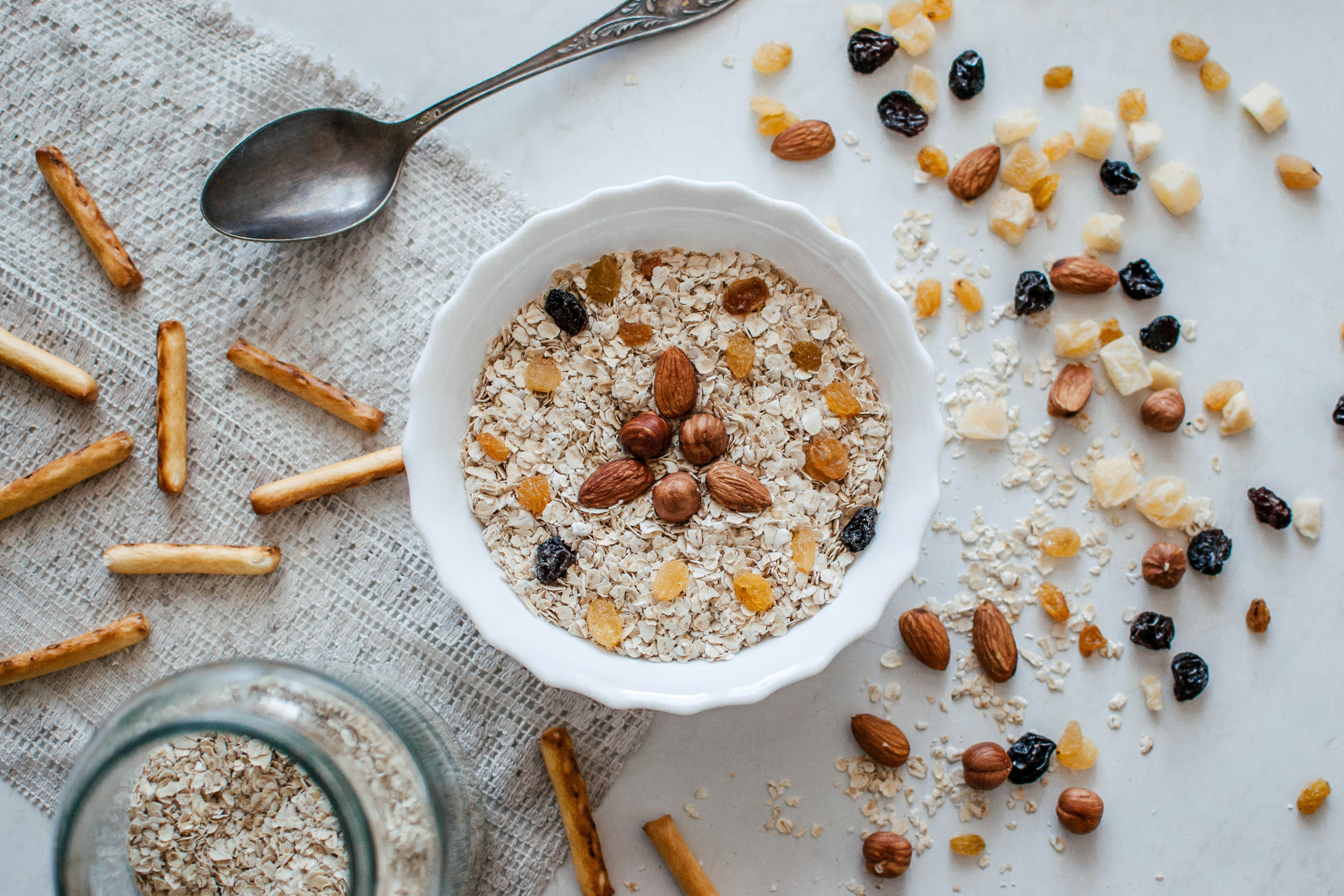7-Day Gallbladder Disease Diet Plan: Low-Fat Eating (Without Sacrificing on Taste)
If you’ve been diagnosed with gallbladder disease, you likely received general dietary advice. However, translating those guidelines into practical meals can feel overwhelming. That’s why we’ve created a comprehensive 7-day gallbladder-friendly meal plan to make things easier and take the guesswork out of eating.
Note: The sample 7-day meal plan provided here is intended for informational purposes only and may not be suitable for everyone. If you have other medical conditions, allergies, or dietary restrictions, it is essential to consult with your physician or a registered dietitian before making any significant changes to your diet.
Understanding Gallbladder Disease and Its Dietary Needs
The gallbladder is a small organ located near the liver. The main job of the gallbladder is to store a substance, called bile, that the liver makes. When you eat a meal (especially a meal containing fat), the gallbladder releases bile into your small intestine to break down fat.
For those with gallbladder disease, the gallbladder does not work as well as it should. There are various causes of gallbladder disease, including inflammation (cholecystitis), infection, gallstones, or a blockage of a gallbladder duct. Abdominal pain, particularly after consuming a high fat meal, is a common symptom of gallbladder disease. Inflammation or gallstones can either be a temporary issue (acute) or last for a longer period and continue over time (chronic).
Get a Customized Gallbladder-Friendly Meal Plan
Managing gallbladder issues through diet can be tricky: let a Season dietitian create a personalized meal plan to support your digestive health. Take our quick assessment to get matched with an expert - 95% of our patients meet with a dietitian for free!

Key Principles of a Gallbladder-Friendly Diet
When the gallbladder is working properly, a healthy balanced diet with plenty of fruits and vegetables can promote gallbladder health. However, for those with gallbladder disease, there are specific diet recommendations aimed at easing pain and inflammation while allowing your gallbladder to heal.
Low-Fat Eating: Why It’s Crucial
The standard recommendation for gallbladder disease is a low-fat diet. Since the gallbladder is responsible for releasing bile to break down fat, a low-fat diet can give your gallbladder a rest while helping to reduce symptoms.
Choosing the Right Foods: What to Include and Avoid
Below is a general guide for what to eat and what to avoid for gallbladder disease. Consult your healthcare provider or dietitian for individualized recommendations.
Foods to Avoid on a Low-Fat Diet for Gallbladder Disease
In general, high-fat foods should be avoided on a gallbladder disease diet. This includes:
High-fat dairy: whole milk, cream, butter, cheese, and full-fat yogurt
Fried and greasy foods: fried chicken, french fries, and other deep-fried items
Processed meats: bacon, sausage, hot dogs, and deli meats
Fatty cuts of meat: beef ribs, pork belly, lamb, and other fatty meats
Baked goods and pastries: cakes, cookies, pies, and pastries are often made with butter or shortening
Cream-based sauces, dressings, and condiments: alfredo sauce, creamy salad dressings, mayonnaise, ranch, and russian dressing
Avocados and coconut
Whole eggs
Foods to Eat on a Gallbladder Disease Diet
Foods to eat on a gallbladder disease diet include:
Lean proteins: Choose low-fat sources of protein like skinless chicken, turkey breast, white fish, and plant-based proteins such as lentils, chickpeas, and beans.
Fruits and vegetables: Fresh, steamed, or roasted fruits and vegetables are packed with fiber and essential nutrients, helping to support digestion and reduce strain on your gallbladder. Opt for leafy greens, berries, apples, carrots, and bell peppers.
Whole grains: Brown rice, quinoa, oats, and whole wheat bread are fiber-rich, helping to promote digestion and maintain healthy cholesterol levels. Fiber is important for reducing the likelihood of gallstone formation.
Low-fat or fat-free dairy: If you consume dairy, choose low-fat or fat-free options like skim milk, low-fat yogurt, and reduced-fat cheeses.
Egg whites: Egg whites are a great source of low-fat protein and can be a versatile addition to your diet.
Herbs and spices: Instead of heavy sauces or dressings, flavor your meals with fresh herbs and spices like turmeric, ginger, basil, and parsley.
Sample 7-Day Gallbladder Disease Meal Plan
Here is a sample 7-Day meal plan for gallbladder disease to help serve as a guide. Remember, this plan is a general recommendation and may not be appropriate for your individual needs or health situation. Consult your healthcare provider before starting a new diet or making changes to your current eating plan.
Day 1
Breakfast
Oatmeal with Berries
Cook up a bowl of oatmeal sweetened with maple syrup. Top with a handful of sliced strawberries for color and flavor. You can use water, skim milk, or a low fat dairy-free milk to make the oatmeal. Note that some varieties of dairy-free milk (such as oatmilk) may have added fat, so be sure to read the Nutrition Facts label.
Lunch
Grilled Chicken & Wild Rice Salad
Slice up a skinless grilled chicken breast and serve over a salad of mixed greens, wild rice, diced tomatoes, and shredded carrots. Instead of a store bought dressing, season your salad with fresh herbs and a homemade dressing of lemon juice, balsamic vinegar, and dijon mustard.
Dinner
Baked Fish with Steamed Vegetables
Serve baked lean white fish (such as cod, halibut, or grouper) with a side of steamed broccoli and quinoa.
Snack
Air Popped Popcorn
Enjoy a small bowl of air-popped popcorn seasoned with salt and a few shakes of garlic powder. Avoid oil-popped popcorn and don’t add any butter in order to keep this a low-fat snack option.
Day 2
Breakfast
Smoothie with Spinach, Banana, and Almond Milk
Blend up a simple smoothie using spinach, banana, and low fat almond milk. Option to add a scoop of protein powder such as whey protein isolate.
Lunch
Quinoa Salad with Cucumber and Tomato
Make a simple quinoa salad with diced cucumber and tomato. Season with salt, pepper, dill and lemon juice.
Dinner
Turkey “Stir-Fry” with Brown Rice
Cook and drain lean ground turkey using your favorite taco seasoning spice mix. Serve over brown rice with sliced and baked onions and peppers. Bake veggies on parchment paper to keep them from sticking and avoid the need for oil.
When sauteing or “stir frying”, be sure to use a non-stick pan or a small amount of cooking spray to keep fat as low as possible.
Snack
Whole Grain Crackers
Pair whole grain crackers with low-fat cheese or a small serving of hummus for a simple, satisfying snack.
Day 3
Breakfast
Greek Yogurt with Apples
Top nonfat Greek yogurt with diced apples and a sprinkle of cinnamon for a protein packed way to start your morning!
Lunch
Lentil Soup with Whole Grain Crackers
Serve a hearty bowl of lentil soup with a side of whole grain crackers. Choose a low fat lentil soup or try Season’s “Simple Lentil and Vegetable Soup”.
Dinner
Sheetpan Baked Chicken with Sweet Potatoes
Rub boneless, skinless chicken breast with a mix of dried herbs such as parsley, sage, and thyme. Bake the chicken on a parchment-lined sheet pan with diced sweet potatoes and serve with a side of steamed green beans.
Snack
Pear Slices with Cottage Cheese
Top fat-free cottage cheese with a sliced pear and a drizzle of honey.
Day 4
Breakfast
Scrambled egg whites with toast
Scramble up 2-3 egg whites and enjoy with a slice of toast on the side.
Lunch
Soup and salad
Make a simple grilled chicken salad with mixed greens and fat-free ranch dressing. Pair with a low-fat vegetable soup like carrot, potato, or a chicken broth based soup. Avoid cream-based soups. Serve with a slice of bread to dip in the soup.
Dinner
Fish tacos
Bake or grill white fish (such as cod) and serve in a soft tortilla. Top with shredded lettuce, white rice, and salsa.
Snack
Rice cakes and jam
Top plain rice cakes with strawberry jam and a drizzle of honey.
Get a Customized Gallbladder-Friendly Meal Plan
Managing gallbladder issues through diet can be tricky: let a Season dietitian create a personalized meal plan to support your digestive health. Take our quick assessment to get matched with an expert - 95% of our patients meet with a dietitian for free!

Day 5
Breakfast
Banana collagen smoothie
Whip up a creamy smoothie using banana, skim milk, and a scoop of plain collagen protein. Boost the nutrients with a cup of spinach and ¼ cup each of blueberries and frozen mango.
Lunch
Turkey wrap
Use your favorite soft tortilla to make a turkey wrap with shredded lettuce and tomato.
Dinner
Baked tilapia
Bake a filet of tilapia and serve with a side of steamed carrots and a baked potato. Season the fish with salt, pepper, fresh dill, and a squeeze of lemon juice.
Snack
Fruit plate
Cut up fruit and eat with a side of crackers and fat-free cheese slices.
Day 6
Breakfast
Apple cinnamon oatmeal
Make a bowl of oatmeal topped with fresh apple slices and a sprinkle of cinnamon.
Lunch
Grilled shrimp salad
Grill shrimp and serve over a salad made with chopped lettuce and shredded carrots. Season with fresh garlic, lemon juice, and parsley.
Dinner
Roasted turkey
Roast a skinless turkey breast in the oven and serve with baked potato wedges and steamed broccoli.
Snack
Veggies and salsa
Skip the high-fat chips! Instead, dip veggies like carrot sticks, sliced bell peppers, or celery sticks in salsa.
Day 7
Breakfast
Egg white omelets
Make an egg white omelet with fat-free cheese, spinach, and diced red bell peppers.
Lunch
Wild rice salad
Make a wild rice salad with cucumber and cherry tomatoes. Season with lemon juice and fresh herbs. For added protein, top with shredded chicken breast or tuna canned in water.
Dinner
Tofu stir fry with veggies
Saute tofu with broccoli, red bell pepper, and bamboo shoots along with soy sauce and a small splash of sesame oil for a hint of added flavor. (Stick to a splash of oil to keep the fat content low). Serve over a bed of brown rice.
Snack
Baked apple crisp
Dice up an apple and bake with a crumble of oats and a sprinkle of brown sugar on top.
How Season’s Dietitians Can Support Your Gallbladder Health
Do you need a gallbladder disease diet plan tailored to your unique needs? Consider working with a Season dietitian! We have a team of registered dietitians who are standing by to help craft a low-fat diet plan individualized to you and your lifestyle. The best part is that the visits are likely covered by your insurance! Click here to find out more and get started right away.





